Gold Coast, Queensland, Australia - Apply now and bring your ambition to life.
Don't wanna be here? Send us removal request.
Text
We’ve moved...

But we’re not far!
Come on over and visit our new blog at bond.edu.au/blog
It’s our new home for all Bond University’s latest news, student stories, study hacks and more.
Drop in anytime.
We’ll see you soon!
Read our Bond Blog
2 notes
·
View notes
Text
Monkey mayhem and more - my semester at Mahidol University

Bachelor of International Hotel and Tourism Management student Nicola writes about her experiences on exchange, all the way from Mahidol University, Thailand.
Read the full story on the Bond University website - click here!
3 notes
·
View notes
Text
Exchange Survival Guide: Lyon, France
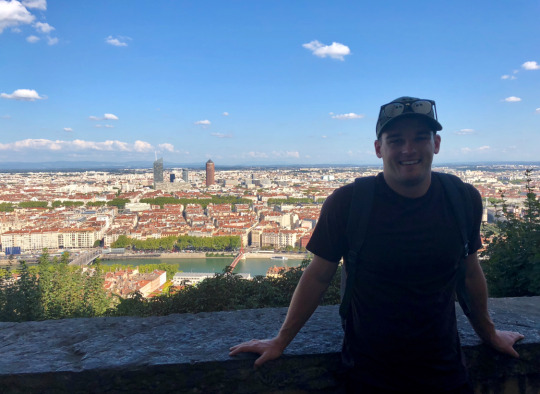
Hello readers! My name is Brayden and I am studying a Bachelor of Laws at Bond University. For my final semester, I wanted to go out with a bang, so I spent the semester abroad at Universite Catholique de Lyon (UCLy) in Lyon, France. This blog will give you an idea of the highs and lows of the experience and provide you with a clear and concise outline in order to be prepared and make the most of your experience.
Preparing to go
Travelling to France on a student visa is very easy, especially as an Australian. The first thing I did (not including the Bond University Exchange application) to prepare for my travels was look into my visa. However, the process is quick and painless if you have all the right documentation and they will provide you with your visa within 2 weeks. The hardest part about getting a French student visa is travelling to the Sydney consulate to hand in all your information because they do not accept the application at the Brisbane consulate or by email (ridiculous, right?). However, once that is done, all you have to do is sit back, relax and wait for your passport to arrive with the visa. One last note about the visa; make sure you provide an envelope with your address etc. so that they send it back to you, otherwise they will wait for you to pick it up (I made this mistake).
Contacting your host university
I got in contact with my host university rather early, to ensure the process went smoothly and I suggest you do the same. We corresponded by email which was difficult regarding the language difference, but they are very helpful and will answer any questions you may have. However, even if there is a question that is just not resonating with them, the Bond University Exchange office can get in touch with them as well and get the necessary answer.
If you are travelling in the last semester of your degree, I suggest that you plan in advance and only have your general electives to do. I had three general electives and one law elective to complete and it was a little bit harder because I had to study in two separate faculties. This may cause delays and issues with receiving the academic transcript in time for graduation.
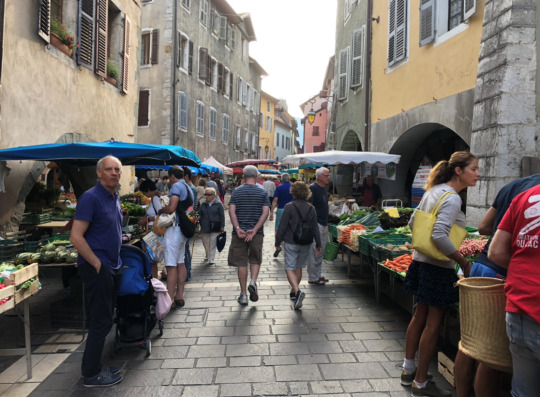
Credit point conversion
The French Universities use a system called ECTS. Essentially 30 ECTS equals your 40 credit points or full-time load in Australia. Specifically, at UCLy the subjects can be as little as two ECTS for a single subject; so, depending on which subjects you choose you could potentially be studying approx. eight subjects for one semester. However, do not worry because that is a full-time load at French universities, so it is not abnormal.
Staying with a family
I chose to stay with a family on my semester abroad so that I could learn the language. This was my main reason for choosing France. The process with UCLy was simple: you get in touch with the lodgement department of the University via email (email is on the UCLy website) and they will find you a family based on a questionnaire. This questionnaire will pair you with a family with similar interests, hobbies and take into account any requests you may have. The family I stayed with were absolutely sensational. They were the stereotypical French family who looked after me as if I was there child. The food was amazing and I definitely recommend considering this option for accommodation. The only downfall was that I lived about 40 minutes away from the University. However, the public transport in Lyon is very good so it was not too bad. If you decide to stay with a family and their name is Grivot-Bruhnes, then you are in luck and will have an amazing experience!
The University
UCLy was a great university for partying, socialising and it was in a great location. The program for exchange students was….interesting. The organisation of the program was not great. It was difficult for many students to get their subjects right and the timetable changes weekly, so you really have to pay attention to your emails. However, in saying this, the University organises some great activities for you to participate in every Thursday.
Furthermore, even though you are a foreign student you have the opportunity to participate in all University activities and clubs. For example, I played rugby for the University. If you are a sporty person, I definitely recommend joining a team because it is a great way to immerse yourself in the French culture and language.
The exchange program
As I said above, the program provides numerous activities throughout the semester. These activities include:
Tours to small French towns
Dinner with a French family
Cooking classes
Parties
Pub Crawls
International Dinners
I highly recommend doing as much as you can while on the exchange. The more immersed you become, the more you will get from the experience. The study is secondary when you are on exchange *wink*.

The city of Lyon
Lyon is a very beautiful city, which prides itself as being the art centre of France. It has some of the most awesome churches and traditional structures. However, the best part of the city is definitely the food, being Bouchon Lyonnais. The food is unique to the area and is delicious. Further, the biggest benefit of living in Lyon is the location. It is 2.5 hours from the Italian and Swiss border and about 6 hours by bus from the Spanish border. Therefore, there is a lot to do and see while you are there, so I recommend making a plan for what you want to see because the time will fly by at a ridiculously quick rate.
The one thing you have to get used to while in Lyon is the difference in culture and attitudes. The streets outside the tourist areas are, for the lack of a better word, creepy. So I suggest always walking around with a group, especially late at night.
Destinations to visit
Annecy
Chamonix
Paris
Nice
Monaco (Monte Carlo)
Amalfi Coast (Italy)
Normandy (if you like WWII history)
Tips and tricks
Due to the exchange rate, travelling around Europe is quite expensive as an Australian. If you are on a budget, I suggest catching buses/trains everywhere as flights can be very expensive. The bus company that I highly recommend is ‘Flixbus’. Flixbus have great buses with good seats and at a very low price (23 Euro for a ticket to Paris). I travelled with them to Paris, Amsterdam, Annecy and Geneva.
It is also very easy to rent a car. I rented a car with my friends and travelled to Chamonix. I was nervous to drive on the other side of the road, but it does not take long for you to get used to the difference.

Final words
I hope this guide is helpful for you in making your decision or preparing to go to France. If you are unsure about whether to go or not, GO! It is honestly an insane experience. At the start of my trip, I wanted to go home because it was overwhelming and I missed my girlfriend and family, but I stuck it out and I am so glad I got past that moment. I met the most amazing people from all around the world and it is true that you make lifelong friends on exchange. I have heard that exchange is not for everyone, but I disagree. You will learn so much about yourself and create great connections and memories. It is difficult at times but the difficulties are worth it for the experience.
If you have any further questions, please do not hesitate to ask. You can look me up on Facebook (Brayden Williams). I wish I had someone to consult with beforehand so please contact me if you need any advice.
Find out more about going on Exchange as part of your studies at Bond University.
5 notes
·
View notes
Text
International Women’s Day 2019: #BalanceforBetter

The better the balance, the better the world. That’s the theme of this year’s International Women’s Day.
We all have a part to play in building a gender-balanced world. We’ve certainly come a long way, but there’s still a long way to go.
To recognise International Women’s Day, we asked some of our students and academics to share their perspectives on gender balance in their industries and lives, as well as the women who inspired them and paved the way.
Kate Thomson Bachelor of Laws/Bachelor of Actuarial Science

My personal experience in how gender balance has shifted has been throughout my studies as a University student. I study a Bachelor of Laws and Actuarial Science, two professions that have held a long history of being male dominated careers. However, this gender stereotype is non-existent in my law classes nowadays, and women in the actuarial profession are highly valued and even sought after. This desire for women in these careers inherently results in a better gender balanced world.
I’m inspired by:
Personally, I view my mother as a massive inspiration for me. She entered the dental workforce when the career was still heavily male-dominated, but this did not deter her from pursuing her aspirations.
Megan King Master of Architecture

Let’s take a look then at the national wage gap. According to the Workplace Gender Equality Agency, the current wage gap between men and women sits at 19%. That means women, doing the same work, with the same qualifications and experience as men, on average are paid 19% less. How is this possible?
Why is it that gender equity is such an issue in the construction industry? As I observe my peer group, visibly, I don’t see any difference in participation rates between men and women in my current course of a Master of Architecture. While I haven’t taken a poll to determine if there are equal numbers of participation, I have learnt however, that prospects of long-term employment post-university is where the issues seem to start. Lower salaries, fewer opportunities for development and promotion and work cultures create barriers to gender equity. It’s evident why women are leaving the industry at a rate of 39% higher than men.
I’m inspired by:
Brit Andresen is a massive inspiration to my architectural career. She was the first female recipient of the RAIA Gold Medal for her sustained contribution to architecture through teaching and practice.
Dr Cindy Jones Associate Professor of Behavioural Sciences

An area of growth over the years is advancing the rights of LGBT individuals, this is inextricably linked to the battle for gender balance or equality. Sexism, homophobia and transphobia are all ingrained in the same prejudicial belief that our biological gender governs who we are, who we love as well as how we live, look and behave. However, this notion has been and will continue to be challenged. Embracing differences makes us stronger and contextualises humanity, and all individuals are deserving of the fairness, justice, dignity and respect in all aspects of life - simply because of existence.
I’m inspired by:
Professor Wendy Moyle. She was my mentor in aged care research and was one of the first group of nursing Professors in Australia.
Zuzana Harmaniakova Bachelor of International Relations/Bachelor of Laws

In a world where approximately 50 per cent of the total population are women, logically, it would make sense that this figure is reflected in all aspects of society. However, it merely takes one to look at a boardroom, public institution or other management or decision-making setting to know that, sadly, it is not the case. Undeniably, progress has been made over the last few years in improving the balance and involvement of women, most importantly, through initiating dialogue and conversations about women in the workplace. But we still have a long way to go - as UN Secretary-General António Guterres rightly stated, “we can’t achieve any of our goals without the participation of women and girls.”
I’m inspired by:
A woman who has and continues to inspire me is Maria Montessori who, despite the conventional barriers of the 1800s, enrolled in an-all boys technical school in the hope of becoming an engineer, was the first female doctor in Italy and established the Montessori education method which is still in use today in schools worldwide.
Rhianna Lovegrove Bachelor of Psychological Science (Honours)

Many people in the world question the achievability of gender equality, deeming it an asymptote towards which we are ceaselessly striving. With such a negative connotation plaguing society, it seems that we often forget to recognise the small yet influential movements that continue to contribute to the collective pursuit of gender equality every single day!
I admire the clever initiatives that are implemented around me: The traction gained from the #ilooklikeanengineer hashtag which arose in response to backlash about women in technology jobs was massive. On a personal level, I’ve observed many of my brave male friends around me raise money for their hideous moustaches during Movember - a campaign that encourages men to defy stereotypes, and to talk about their mental health issues in attempt to reduce the disproportional imbalance of men and women who seek help. I was even super proud that our very own Bond University launched the Riewoldt Family AFL Excellence Scholarship for male AND female players - talk about balancing the playing field.
As Emma Watson eloquently put it when she addressed the UN with her HeForShe campaign launch, “both men and women should feel free to be sensitive. Both men and women should feel free to be strong, it is time that we all perceive gender on a spectrum, instead of two sets of opposing ideals.” That’s what today is all about!”
I’m inspired by:
Katarina Needham, a Bond University teacher and friend of mine who inspires me as a student and Sharon Solyma, a close friend who teaches me that women can be kind and emotional, whilst still being incredibly powerful.
Eileen Truong Medicine

Every week, when you tune into the news, there is another story about how a female doctor has given up on her path to become a surgeon. The environment is unwelcoming, the hours are not family friendly, and the bullying and harassment is unbearable. All this is disheartening for medical students like me to read about, but I am glad to see more women speaking out against this. It’s raising awareness, carving out a path for change, and gives me hope that when I finally enter the hospital there will be more support for females so that we can choose, and stay, in this amazing speciality.
I’m inspired by:
The woman who has inspired me most is someone who I unfortunately don’t know the name of. I just thought she was incredibly brave, and I felt honoured to be in her presence. She was the first person I did a dissection on and she was the reason why I decided to pursue medicine. I was in awe of her generosity and I felt so privilege to be able to learn from her so that one day I could be lucky enough to, in turn, help others.
Dr Beata Webb Assistant Professor of Applied Linguistics

Did you know that soon more women than men will study at world universities? Did you know that cohorts are getting older? We all know that the universities become more and more linguistically and culturally diverse.. Now you can really see our future learner! It’s that mature woman with a foreign accent! Over the last six years, I have taught many brilliant female students who chose the online program at Bond: they were single-mothers, women with families and with full-time jobs, from Australia and the world. It has been a privilege to work with them and support them in getting better qualifications. They are driven to study, because, like me, they believe that the best way to gender equity is through education.
I’m inspired by:
My story is very simple: the woman who has inspired me most was my mum. My mum has taught me lessons which have shaped my life: who I am, what I do and how I do it. I miss her wisdom and all the laughter.. I often wonder which of her lessons is the most important.. is this the one that every woman must follow her dreams and goals? Or maybe the one that every woman must feel truly loved by the man she is with? My mum has also taught me that If I ever felt less anxious before every class and felt less passion for teaching, I must change jobs.. The lesson which I hope to pass on to my daughter is that women can have it all.. Hey, nobody said it would be easy! And when things get tough, mum taught me to always remember that those hard times will pass, and to always appreciate those best times, because they will pass too. Above all, my mum has taught me that, after every storm, the sun shines even brighter.
Dr Daniela Ottmann Associate Professor of Architecture

“Women are the ghosts of modern architecture, everywhere present, crucial, but strangely invisible,” says Beatriz Colomina.
Let’s keep on promoting equity in architecture, celebrate women active in the profession and overcome the starchitecture cult to concentrate on architecture in the continuation of nature in her constructive activity.
The below image is from a campaign empowering women in architecture: architectess.

Happy International Women’s Day to all of the women in the Bond University community, and beyond.
youtube
0 notes
Text
A semester in the City of Lights
“Having spent the better part of the last five months in Paris, France, two things are certain: exchange is a transformative personal experience that I would recommend to anyone willing to listen, and there is no limit as to how much bread and cheese one can consume on a given Friday...”
Read Stephanie’s full story on the Bond University blog - click here!
0 notes
Text
Inside the city known as ‘Heaven on Earth’
Bachelor of Arts/Bachelor of Laws student Stephanie Goetz set off to Soochow University in Suzhou, China, for a semester. Here, she shares her experiences in the city affectionately known as ‘heaven on Earth’.

My exchange semester at Soochow University in Suzhou, China, was an amazing experience. Looking back, I can say with certainty living and studying there was one of the best decisions I have made in my life so far. I set out to China with only a plane ticket and the address of the university, having no idea where I was living within the university, where my classes were or where to register my attendance! However, coming back I had achieved HSK 4, had amazing travel experiences with great friends, and a deeper understanding of Chinese culture and life.

The university is centrally located, the food is amazing, Shanghai is only 25 minutes away by bullet train, and the local people are incredibly friendly.
Suzhou is also referred to as ‘Heaven on Earth’ due to its beautiful winding canals.
My semester was both challenging and rewarding, with little to no English being spoken by my fellow students and dormitory staff, and few English speaking university teachers, lecturers and staff.

Whilst in China I was taking Chinese language in the School for Overseas Education and economics within Soochow’s Business School. The workload and total time in class is more than double that of Bond, with daily participation expected. Daily homework and tasks should be expected with frequent tests before a large mid-term and final exam. My day would start with a 20 minute walk from my dormitory to class for an 8:30am start. I had two Chinese teachers, a speaking teacher and a grammar teacher. These classes are taught solely in Chinese. Whilst this was challenging at first my language skills improved beyond my initial expectations and the friendships I formed were meaningful and closer due to an increased need for effort and communication.

There is plenty of time to travel too and in between classes and assessment. I was lucky enough to travel to 黄山, called the Yellow Mountains in English. I cannot possibly begin to describe how beautiful it was, however, I can describe the gruelling 7-hour hike to the top of the Mountain where we stayed. Having done this, I highly recommend taking the cable car up the mountain.

This exchange would be amazing for anyone prepared to take on the linguistic and cultural challenges that will arise during their time abroad. I absolutely fell in love with Suzhou during my time abroad and I hope future students do too.
Find out more about completing an exchange as part of your degree at Bond University.
0 notes
Text
Finding a global perspective in Japan
Master of Valuation and Property Development student Michel Wersandt travelled to Tokyo to complete an exchange semester at Hosei University. Read on for his firsthand account of his exchange experience.

Looking back on the last five months of exchange in Japan, I will return home with many new memories, experiences and friends that I will never forget.
I choose to go to Hosei University mainly because of its location in Tokyo, as I always wanted to experience what life is like in the biggest metropolis of the world. My interest in Japanese and in general Asian culture were also contributing factors.

While studying at Hosei University, I was taking MBA subjects taught in English that form part of their Global MBA program. In my classes were around 15 students coming from all over the world, some which have already been living and working in Japan for longer and thus could help me with all of my questions at the beginning. The professors invited lots of guest lecturers which made the program quite interesting and colorful. Furthermore, the workload compared to Bond was a bit lighter, which left me with enough free time to travel around and experience Japan.

I didn’t take any Japanese language courses; however, I would recommend it to anyone wanting to study in Japan. You can get around with English but knowing some words of Japanese makes everything easier and the locals tend to be much more open when approached in Japanese. Hosei University also offers free Japanese courses for all exchange students.
The classes were held at night-time or on Saturdays, and in Japan it is quite frequent to go with its coworkers for ‘nomikai’ (basically having dinner and drinks) at the end of the workday or in this case with the professors and the fellow students at the end of the class; which I really enjoyed.

Tokyo has the world’s largest and best railway network, however with it being so complex, I ended up taking the wrong train or riding in the wrong direction sometimes. Google maps is a huge help and in general it is amazing to see how well-organised the city’s public services and also its people are.
The sheer size of the metropolis is incredible, and 5 months have by far not been enough to see most parts of Tokyo. You could spend a life-time here and still discover new areas, restaurants and bars every day.

The university offered student accommodation but since the dormitory was located far away from the campus and from the city center, I choose to rent a small apartment through an agency that specialised in offering accommodation to foreigners. Another alternative is to rent a room in a shared apartment as rents tend to be a bit higher in Tokyo. With some research done in advance, one manages to find the right accommodation quite easily.
My exchange semester was an incredible experience and I’m really grateful to have had the opportunity to go on this adventure. Tokyo is probably one of the safest cities in the world and at the same time there’s so much to experience here; no matter what kind of person you are, so I would 100% recommend doing an exchange here.
Find out more about completing an exchange as part of your degree at Bond University.
0 notes
Text
Bangkok and beyond
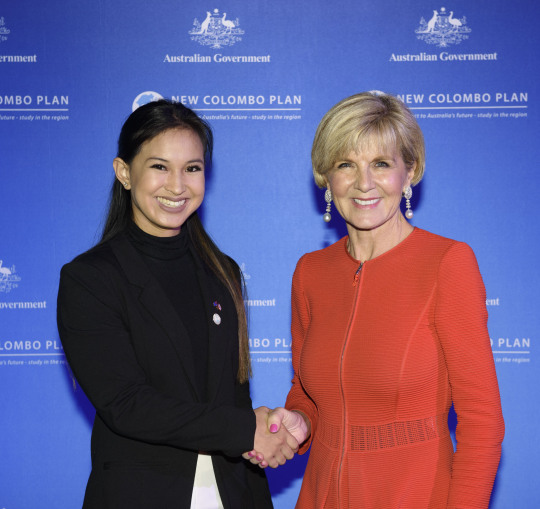
Jasmine Valcic (Bachelor of International Relations/Bachelor of Laws) shares her experience studying in Thailand and her advice for applying for the Australian Government’s prestigious New Colombo Plan Scholarship.
Between hearing about my successful application for the New Colombo Plan (NCP) Scholarship program and my departure for Thailand, I had almost a year to plan and wait. As the departure date loomed closer I became more and more restless, but it was definitely worth the wait! I have just finished the first component of my program: undertaking an exchange program at Mahidol University International College in Thailand, and I loved every moment of it. I lived in Salaya, an area about 30 minutes from Bangkok CBD, close to the university. Out of all of the places I visited during my time in Thailand, Salaya is the place I’d be most likely to live. It had the perfect combination of hustle and bustle without being hectic or touristy. It was far enough from the CBD that prices were lower (approximately $2 per meal), but close enough that it was easy to pop into the city for a day.
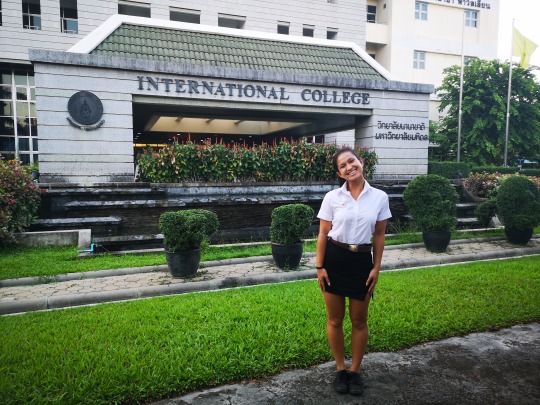
The MUIC campus itself was beautiful, and even had its own lake and river system. All of my classes were held in MUIC’s newest building, which was an amazing architectural combination of being both indoor and outdoor. My favourite part of studying at MUIC was learning from a different cultural perspective. Two of my subjects were ‘International Organisations’ and ‘Transnational Crime and Law Enforcement’. Even though I had previously undertaken subjects at Bond that had a content overlap, it was fascinating learning about international affairs through the lens of a different culture. Further, two of my professors actively encouraged class discussions and debate; one of my subject’s final assessments was an in class debate on humanitarian intervention into Yemen. This allowed me to hear the opinions of not only the teachers, but students from all walks of life. As MUIC is an international school, I was able to interact with Thai locals as well as students from all over the world in my classes.

During my 3 months, I was able to visit places in Thailand ranging from down south in Phuket, to further up north in Chiang Mai, and a variety of places in between. Another fantastic bonus that accompanies studying at MUIC is the structure of the class schedule. I was able to organise my schedule so that I only had classes on Mondays and Wednesdays. This allowed me to travel every Wednesday night to Sunday night. My favourite trip was definitely my second visit to Chiang Mai to see the Yee Peng festival. Yee (or Yi) Peng falls on the full moon of the 12th month. Everyone comes together to release lanterns into the sky. The release of lanterns is a way of honouring Buddha and of releasing the suffering that has been held within from the previous year. At the risk of sounding cliché, being a part of such a collective spiritual moment was indescribable. I felt elated and light, and yet warm and comforted, it was a truly beautiful experience.
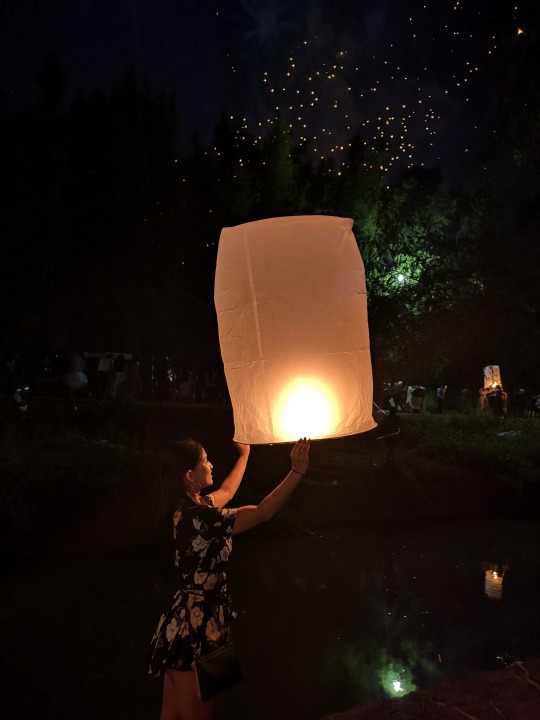
I had been given advice by my fellow NCP Thailand Scholar (who began his program earlier in the year) that undertaking a full internship during the study semester was too much. I am glad I listened, having more spare time and flexibility allowed me to truly enjoy the experience and explore various facets of the Thai culture. However, part way through the semester I felt I had some spare time and wanted to do something more to enhance my experience and contribute to my professional development. An opportunity arose when I met a member of the UN Digital Service ReliefWeb team at the Australian Embassy’s NCP meet and greet (for scholars and grant students). She told me about ReliefWeb’s upcoming interactive seminar at the inaugural Peace Summit for Emerging Leaders, which was being held in the Bangok UNESCAP Headquarters, and mentioned that they were seeking volunteers to help organise the event.
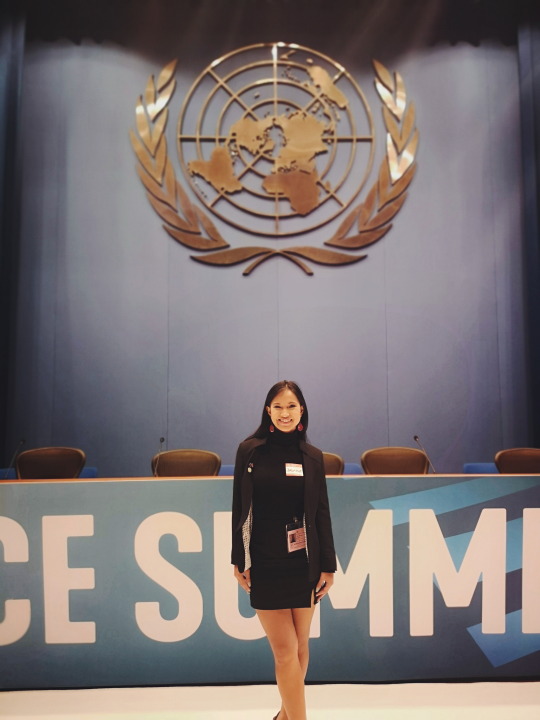
I applied to be an online volunteer with ReliefWeb at https://www.onlinevolunteering.org/en. As a volunteer, the next two months I was involved in writing general briefs and judging criteria and edit country briefs for the simulation. As the position was entirely online, except for aiding logistics on the day at the event, I was able to complete the tasks from any location, and it did not greatly impact my plans to travel all through Thailand. Working with ReliefWeb was an amazing experience. I learnt so much about how a UN service functions, as well as different event organisation skills. The fun and tight knit team was fantastic to work with, and I made some valuable connections. It really ended up being the perfect project to contribute to my profession development, without overloading my plate or taking away from my overall cultural experience of Thailand.
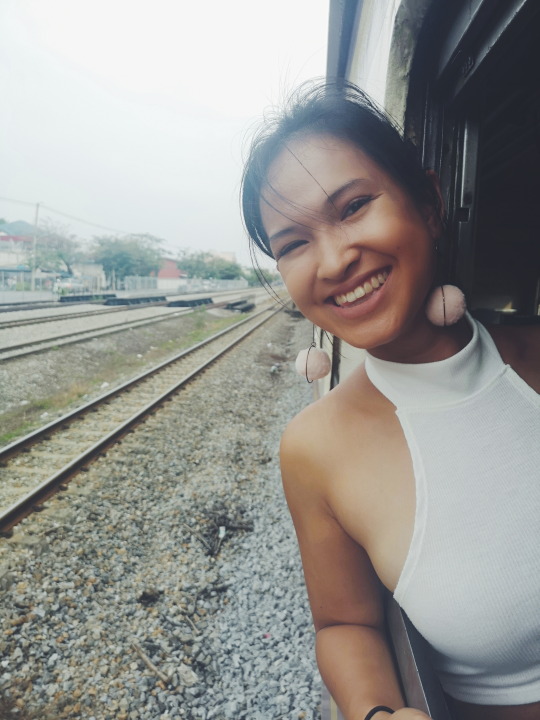
I highly recommend to anyone looking to study abroad to seriously consider Thailand and MUIC. It is a place too often overlooked, as people are unaware of the amazing cultural and professional opportunities in Bangkok. Thailand is the Southeast Asian hub, and gateway, for business and international relations, and its global importance and the opportunities it presents should not be underestimated. I am writing this blog from my new apartment in Manila, where I am about to begin an internship with Austrade. As I reflect on my experience so far, I am eager to begin my next adventure and next component in my NCP program.
Advice for future New Colombo Plan (NCP) Scholarship applicants:
1. Use all information available. When preparing your application, and for the interview, it is important to understand exactly what the selection committee is looking for. The DFAT website has masses of information on the program, as well as advice from the last year’s selection committee. There is also an archive with all the advice from all previous years. Use this information to help guide you in writing your application.
Useful links:
http://dfat.gov.au/people-to-people/new-colombo-plan/scholarship-program/Pages/scholarship-program.aspx
http://dfat.gov.au/people-to-people/new-colombo-plan/scholarship-program/Pages/previous-rounds.aspx
2. Think outside of the box when choosing your host country. The NCP offers more than 40 different locations, however most applicants apply for the same locations: China, Japan and Singapore. Although there isn’t a specific quota of scholars per location, because of the high number of applicants, these locations are more competitive. When selecting a host country to apply for, look at countries other than the big 3, there are plenty locations which are suited a wide variety of different interests and areas of study.
3. Be unique and personable. When I attended the NCP pre-training event, I was sure I would be walking into a group of suits that were all the same. I could not have been more wrong; everyone was different and came from all walks of life. Although there definitely was a large number of international relations students, it was by no means the only area of study. For example, one scholar selected Japan as their host location purely to study niche areas of Japanese film. The one linking factor between the scholars was their openness to meet new people, and their ability to network. It isn’t surprising given that at the end of the day, what the selection committee is looking for is a group of young ambassadors.
Find out more about completing an exchange as part of your degree at Bond University.
#Jasmine Valcic#Thailand#Mahidol#MUIC#NCP#New Colombo Plan Scholarship#Exchange#Asia#Bond University
1 note
·
View note
Text
How to get the best out of your smartphone camera
Bond University Senior Teaching Fellow and award-winning mobile journalist Rob Layton shares the tips of the smartphone photography and video trade.

Photo: A light-trails long exposure of London’s Tower Bridge, shot on iPhone 8 Plus using the NightCap app.
Each time you snap a photo with your smartphone — depending on the make and model — it may perform more than a trillion operations for just that single image.
Yes, you expect it to do the usual auto-focus/auto-exposure functions that are the hallmark of point-and-shoot photography.
But your phone may also capture and stack multiple frames (sometimes before you even press the button), capture the brightest and darkest parts of the scene, average and merge exposures, and render your composition into a three-dimensional map to artificially blur the background.
The term for this is computational photography, which basically means that image capture is via a series of digital processes rather than purely optical ones. Image adjustment and manipulation take place in real time, and in the camera, rather than in post-production using any editing software.
Computational photography streamlines image production so everything — capture, editing and delivery — can be done in the phone, with much of the heavy lifting done as the picture is taken.
A smartphone or a camera?
What this means for the everyday user is that your smartphone now rivals, and in many cases surpasses, expensive DSLR cameras. The ability to create professional-looking photos is in the palm of your hand.

Photo: Low-light photography shot on iPhone 8 Plus.
I started in photography more than 30 years ago with film, darkrooms, a bagful of cameras and lens, and later the inevitable switch to DSLRs (with digital single-lens reflex, light travels through the lens to a mirror [the reflex] that sends the image to the viewfinder and flips up when the shutter is fired for the image sensor to capture the image).
But my photography now is done exclusively with an iPhone — because it's cheaper and always with me. I have two accessory lenses, two rigs (one for underwater, the other for land), a tripod and a bunch of photography apps.
It's the apps that often are the powerhouse of computational smartphone photography. Think of it like a hotted-up car. Apps are bespoke add-ons that harness and enhance existing engine performance. And, as with car racing, the best add-ons usually end up in mass production.
That certainly seems to be the case with Apple's iPhone Xs. It has supercharged computational photography through its advances in low-light performance, smart HDR (High Dynamic Range) and artificial depth-of-field: this is arguably the best camera phone on the market right now.
A few months ago that title was held by the Huawei P20 Pro. Before the Huawei it was probably Google's Pixel 2 — until the Pixel 3 came out.
The point is, manufacturers are leapfrogging each other in the race to be the best smartphone camera in an image-obsessed society (when was the last time you saw a smartphone marketed as a phone?).
Phone producers are pulling the rug from beneath traditional camera manufacturers. It's a bit like the dynamic between newspapers and digital media: newspapers have the legacy of quality and trust, but digital media are responding better and faster to market demands. So too are smartphone manufacturers.
So, right now, the main areas of smartphone computational photography that you may be able to employ for better pictures are: portrait mode; smart HDR; low light and long exposure.
Portrait mode
Conventional cameras use long lenses and large apertures (openings for light) to blur the background to emphasise the subject. Smartphones have small focal lengths and fixed apertures so the solution is computational — if your device has more than one rear camera (some, including the Huawei, have three).
It works by using both cameras to capture two images (one wide angle, the other telephoto) that are merged. Your phone looks at both images and determines a depth map — the distance between objects in the overall image. Objects and entire areas can then be artificially blurred to precise points, depending on where on that depth map they reside.

Photo: This portrait of a young lowbow archer was shot with the Halide app, the background blurred in Focos app, and final editing done in Lightroom CC for mobile. Notice the bowstring disappears in low-contrast areas on the depth map, showing limitations in a technology not yet perfected.
This is how portrait mode works. A number of third-party camera and editing apps allow fine adjustment so you can determine exactly how much and where to put the bokeh (the blurred part of the image, also known as depth-of-field).
Other than what's already in a smartphone, (iOS) apps for this include Focos, Halide, ProCam6, Darkroom.
Android apps are harder to recommend, because it's an uneven playing field at the moment. Many developers choose to stick to Apple because it is a standardised environment. That said, you may try Google Camera or Open Camera.
Smart HDR
The human eye can perceive contrast far greater than cameras. To bring more highlight and shadow detail into your photo (the dynamic range), HDR (High Dynamic Range) is a standard feature on most newer smartphones.
It draws on a traditional photography technique by which multiple frames are exposed from shadows to highlights and then merged. How well this performs depends on the speed of your phone's sensor and ISP (image signal processor).
A number of HDR apps are also available, some of which will take up to 100 frames of a single scene, but you may need to keep your phone steady to avoid blurring. Try (iOS) Hydra, ProHDRx or (Android) Pro HDR Camera.

Photo: HDR exposes for shadow and highlight details to extend the dynamic range.
Low-light and long exposure
Smartphones have small image sensors and pixel depth, so they struggle in low light. The computational trend among developers and manufacturers is to take multiple exposures, stack them on top of each other, and then average the stack to reduce noise (the random pixels that escape the sensors).
It's a traditional (and manual) technique in Photoshop that's now automatic in smartphones and is an evolution of HDR. This is how the Google Pixel 3 and Huawei P20 see so well in the dark.
It also means that long exposures can be shot in daylight (prohibitive with a DSLR or film) without risk of the image overexposing.
In an app such as NightCap (Android, try Camera FV-5), long exposures are an averaged process, such as this three-second exposure of storm clouds travelling past a clock tower.
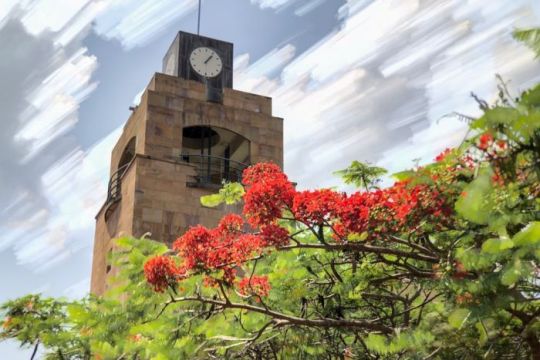
Photo: A three-second exposure of passing storm clouds at Bond University at midday, made possible through computation.
Light trails, such as the main image (top) of London's Tower Bridge and these images (below) of downtown San Francisco and a fire-twirler are an additive process to capture emerging highlights.
A tripod is essential unless you use Adobe's free editing app Lightroom (iOS and Android), which has a very good camera with a long exposure feature that adds auto-alignment to its image stacking.
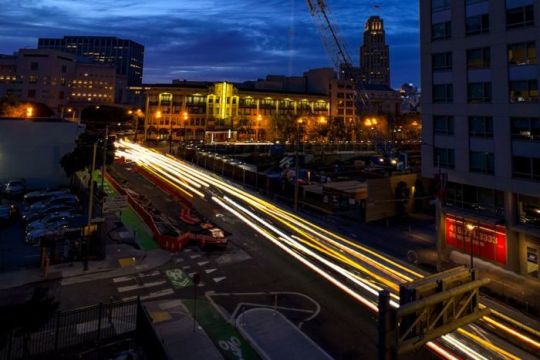
Photo: Light Trails mode was used to capture passing traffic in this long exposure of downtown San Francisco.
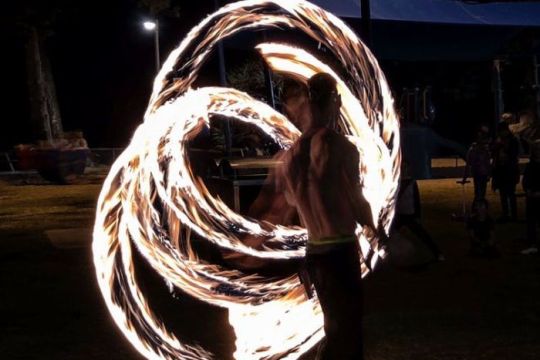
Photo: Light Trails was used to capture this fire twirler at Burleigh Heads on the Gold Coast.
Long exposure in iPhone's native camera app can be made by tapping the Live mode button. The iPhone records before you press the shutter, so you need to keep the camera stable before and after you take the picture. Then, in the Photos app, swipe the image up to reveal four modes: Live, Loop, Bounce and Long Exposure.

The key to successful smartphone photography is to understand not just what your phone can do, but also its limitations, such as true optical focal length (although this device by Light is challenging that). However, the advances in computational photography are making this a dynamic and compelling space.
It is worth remembering, too, that smartphones are merely a tool, and computational photography the technology that powers the tool. This old adage still rings true: it is the photographer who takes the picture, not the camera. Mind you, the taking is becoming so much easier.
Happy snapping.

Photo: An underwater housing for iPhone (AxisGo by Aquatech) was used to capture this picture of a father and daughter swimming in the ocean.
Find out more about how a Bond degree could help you get ahead in your journalism career.
All photos taken and edited on a smartphone by Rob Layton. This story originally appeared on The Conversation.
1 note
·
View note
Text
A semester in Paris
Renee Jackson (Bachelor of International Relations/Bachelor of Laws) shares an honest account of her 2018 Exchange to University Pantheon-Sorbonne Paris 1, France.
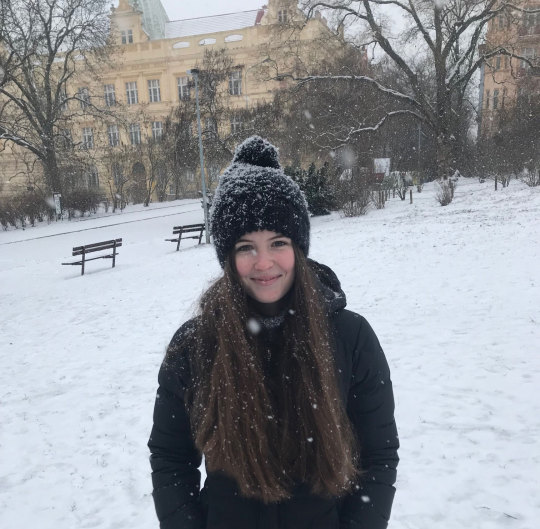
“Wow, Paris! I am so jealous,” was the typical response I received from family, friends and even strangers when I told them where I was heading for my semester abroad experience.
While Paris has an idealistic representation across the world, there is a significant amount of planning to be done for Exchange and doing it from the other side of the world can often be hard, so I thought I would share all the lessons I learnt along the way!
After learning French all throughout high school and loving it, I had considered the idea of heading to a Francophone country to do a semester abroad. When the Bond Exchange page popped up on my Facebook, I began researching and narrowing down my options, leaving me with Panthéon-Sorbonne Paris 1 Université. The internal Bond application process is easy, and even the first steps for Paris 1 are too. After filling out the forms and being accepted, I began planning more in depth for my Exchange experience including thoroughly research the visa requirements and the type of visa I needed to meet all requirements.
I began with looking at the university dates and aligning these with accommodation. Living costs in Paris are notoriously expensive, so if you are considering taking a semester here, also expect the high living prices that come with Paris. I looked at various different websites, from agencies to more casual sub-letting advertisements. However, I settled with an agency and accepted paying the agency fee and extra security costs so that I could be reassured that everything would be organised and well-arranged when I arrived. Many people also have temporary living arrangements when they arrive in Paris and then commence their apartment hunting.
When choosing your arrondissement, think about the kind of area you want to live in. The main buildings of the university are spread among multiple arrondissements (Pantheon & Sorbonne in the 5th, René Cassin in the 13th, PMF at Tolbiac), so unless you are choosing your accommodation after picking classes, I wouldn’t base it off building location. I chose to stay in the 16th, because it was more quiet and reserved yet still close enough to everything that I wanted. The 3rd is a lot more lively and trendy, the 5th too. Do some research about the arrondissements and then align that with your preference of living area. I personally wouldn’t choose the 18th, as it is far from the majority of things and in certain areas can be unsafe. The same rule applies around buildings close to the main train stations. However, use common sense and caution and you will not have any problems in Paris!
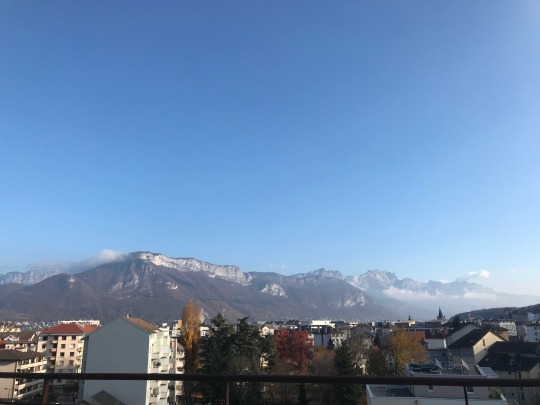
A few tips for accommodation in Paris:
Most Parisian landlords require you to have a French dossier with numerous documents, and documents that you can often not provide. This is why an agency may be helpful as they can be more lenient in what documents must be provided.
The dossier document often feels invasive. As I did not have a French guarantor, I had to provide my passport, my parents passports and payslips and multiple other documents. This is common practice in France.
Accommodation is expensive, but even more expensive when you choose to book through an agency. Personally, I utilised Lodgis and had nothing but a positive experience – however also be aware that every agency also has as many negative reviews as positive. I was lucky and had a landlord that was incredibly kind and helpful, even inviting me into her home and I have now created a lifelong friend.
Paris 1 does not offer student accommodation in the same manner that Bond does. It is run through Cité Internationale Universitaire de Paris. However, as an Australian student, you are highly unlikely to be able to obtain a position here. They generally are provided for European Union students, and the majority are also for Master level (French equivalent) students. If you are lucky enough to receive a position, I had a friend who stayed here, and she had a room with a double bed, tiny bathroom, an eating space in her room and a communal kitchen and laundry room.
Accommodation is small. I lived in 17m2 but knew people who lived in a fully functioning apartment that was both 14m2 and 11m2. Many people often find larger apartments and share them with other exchange students too.
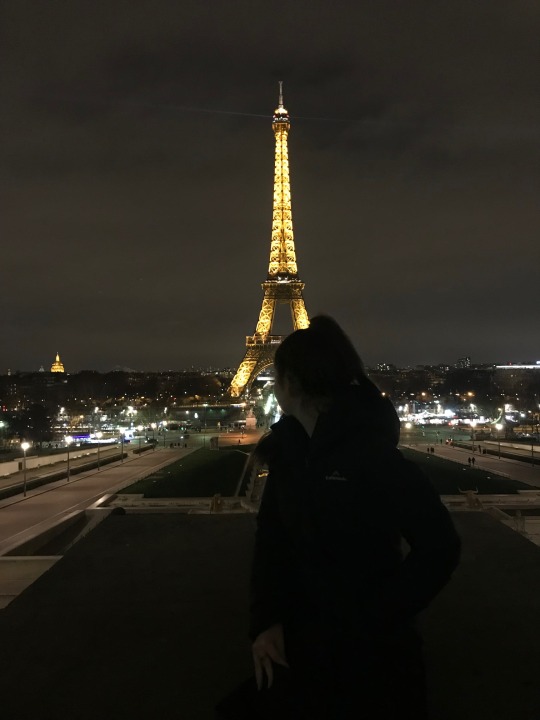
Arriving in Paris
When booking my flights, I left two weeks prior to my studies to settle in and one week after the scheduled exam timetable free to travel or relax at the end. The Integration Week that Paris 1 offers starts a week before classes do and is helpful in determining the classes you may want to take, updating/refreshing your vocabulary on legal subjects as well as teaching you the basics of the legal system in France, which is very different to that of Australia. Each student isn’t guaranteed a position in the Week, so just be conscious of that fact. At the end of the week, they have a presentation from the Exchange Office of Paris 1, which provides you with all of the basic information about your enrolment and classes, etc. If you do not get offered a place to the Integration Week, still go to this presentation.
As a basic rule, don’t expect much on the organisation front from the University. Take everything that you receive prior to the Integration Week with a grain of salt. We did not receive the available courses until the Friday before classes commenced on Monday. The level of organisation is vastly different to that at Bond, however this is all in the ‘charm’ of the French experience, so try not to stress too much about it and embrace it. Before my departure, I had decided to try and create a timetable with the least amount of contact time to allow myself more time to travel and see whatever I desired without too many restrictions. However, the classes I thought I was going to take prior to departing carried a completely different timetable and subsequently I changed most of my subjects.
The process of picking subjects requires you to choose the classes you wish, fill out your Learning Agreement, make an appointment with your delegated officer, take it to your officer who will read over it and check it (often asking you questions if you are prepared for the workload of that subject, however mine didn’t even look twice and signed it) and then you submit that to the Exchange Office. Your enrolment into TDs (tutorials) happens in a completely different building in a completely different arrondissement (suburb). To obtain your student card and Certificat de Scolarité, this also takes place in a different building, also in a different arrondissement. The French are not fussed about making things easy or simple, so take a deep breath and schedule your days around which area you have meetings that day. Once you pick subjects, they will provide you a deadline for changing your enrolment and after this date, you will not be able to sit the exams (or obtain credit points) for any new subjects.
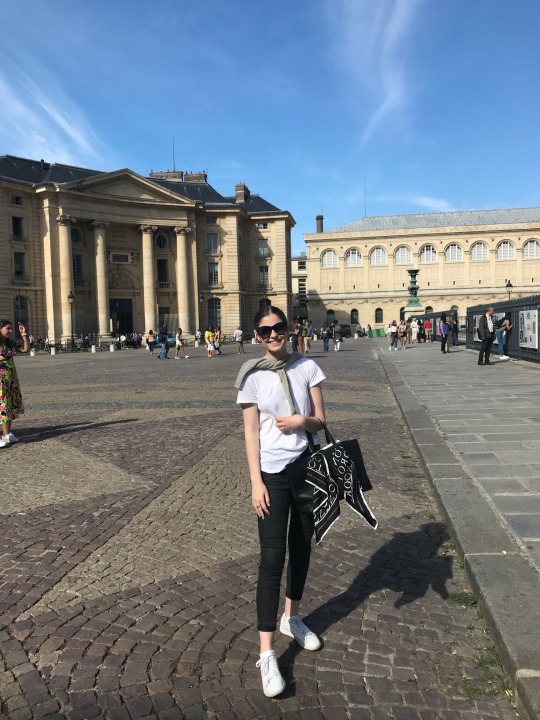
Subject selection and study load
As I had previously completed a Student for a Semester at Bond, I chose to only take the equivalent of three Bond subjects while overseas to minimise the workload as much as possible. Note: 10 Bond credits = 7.5 ECTS. Unlike Bond, many subjects at Paris 1 can be taken without tutorials, and it is completely your choice as to whether you choose to enrol in a TD or not. As a rule of thumb, in the Integration Week they advise everyone to take a maximum of ONE TD in the first semester and to increase this to two if you stay for two semesters. TDs are generally worth 8 ECTs and subjects without TDs are 4 ECTs. I chose to take three subjects without and one with. While the TD wasn’t incredibly difficult, there are additional exams, debates in front of the class and it requires following along in a fast-paced environment where you are often the only (or one of the few) exchange students there. In saying this, the TD was an interesting experience for me and allowed me to overcome different challenges and learn the application of the law rather than just the theory. While it may be nerve-wracking, it is an experience I would definitely recommend as it generally equates to one less final exam.
In general, the subjects are much more hands-off than that at Bond and some people may struggle with the less interactive way of learning. This is worth keeping in mind, as is the speed that some lecturers talk, and the competency required for certain subjects. When taking any subject past an L1 (L1 = first year, L2 = second year, L3 = third year, Master level), there is a certain level of assumed knowledge about the legal systems and the style in which they complete exams and the type of assessment they do. I, as well as many others on Exchange, sometimes found it challenging to know what the lecturer wanted from us. They aren’t liberal with their information, so you will have to pry to find out more about even the most basic of things (exams, dates, style of writing etc.).
If you need to return to Bond before the commencement of the next semester, you are often able to personally organise different exams before the Christmas break to allow for your earlier return (however don’t count on it).
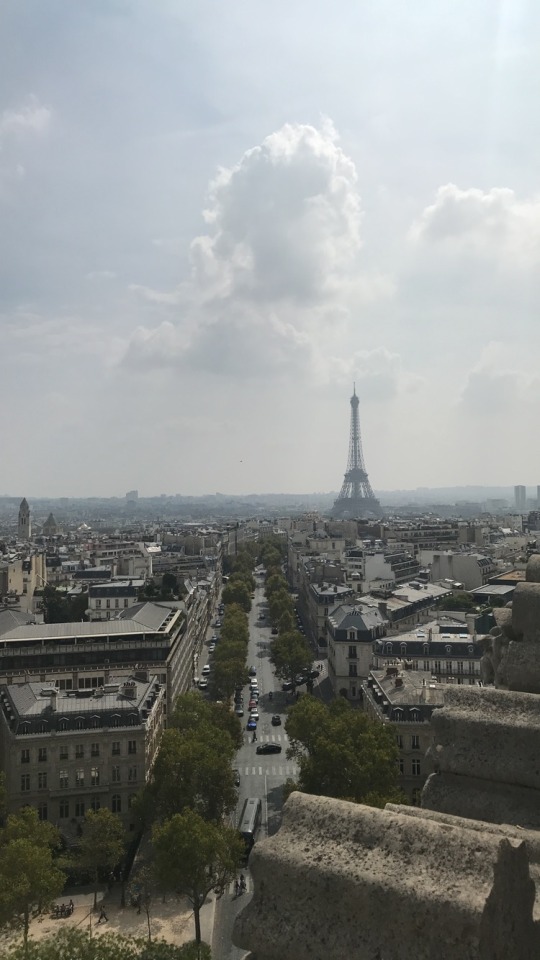
The verdict and final tips
Overall, my experience at Paris 1 was wonderful (dampened only by the initial lack of organisation, which I promise you will laugh about only weeks later!) Upon reflection of my experience there (and as I sit on a train between Venice and Rome), my main tips for travelling to Paris 1 would be:
Find (or at least have a very clear idea) of accommodation and the area you want to live in when you arrive. Do your research if you aren’t already familiar with the area and be cautious about people trying to scam you!
Keep in contact with friends but don’t depend on speaking to them every day.
Start speaking the language and gain familiarity with it again (if it has been a while) as soon as possible; don’t be shy.
Go to the Integration Week and speak with people, making friends can be hard in Paris as most French people already have solid friendship groups and aren’t interested in being friends with exchange students.
As soon as you arrive, or even before (if you know your address etc.,) apply for your ‘Imagine R’ student travel card. It is cheaper with this option for 5 months. However, if you miss the date and will only have a travel card for 4 months, your ‘Navigo’ card will be your best friend. It is around 75 euro for the month and allows unlimited travel within the 5 zones of Paris (including to CDG and Disneyland).
Setting up bank accounts and phone numbers can be a difficult process, as they both generally require the other, making it incredibly frustrating to get them sorted out. However, I used BNP Paribas and had no problems using my Australian phone number as a preliminary number and then changed it when I received my French one.
Use your Paris 1 student card to get in to most of the Paris (and French) attractions at a reduced rate (Louvre, Chateau de Versailles, Chateau de Fontainebleau etc.). Using this card will demonstrate that you are a resident of Paris and they are mostly free for EU residents.
Organise your visa early and the sooner the process is complete, the better. As you have to travel to Sydney to organise it, be fully prepared and ensure you have every document with you when you go.
Travel as much as you can while there because you are SO close to everything, but don’t neglect Paris. There is more to do there than you could ever fit in during one semester, so see as much as you can!
Bon séjour à Paris!
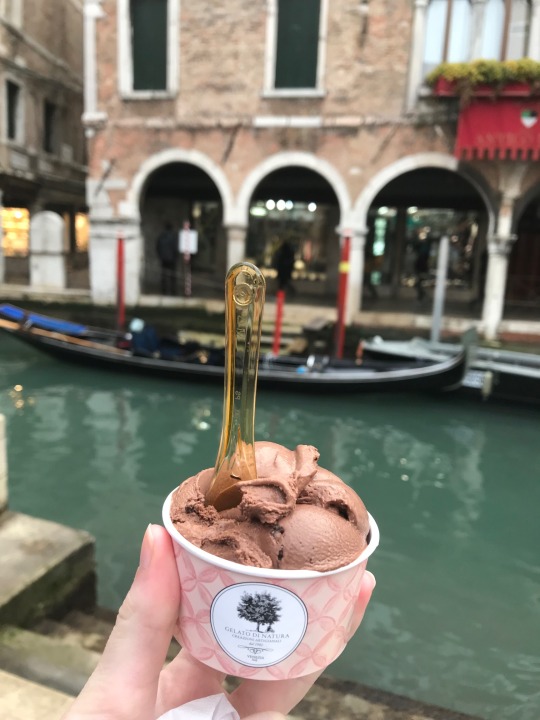
Exchange is an experience that will stay with you forever. Find out more about Exchange opportunities at Bond University.
0 notes
Text
How to conquer your first semester of university

Want to learn how to conquer your first semester of university?
Read the full story on the Bond University blog - click here!
0 notes
Text
A semester in Bergen, Norway
Katherine Muir spent a semester on exchange at the University of Bergen, Norway. Read on to find out about her experience and advice to future Bondies heading on exchange.

Bergen... ever heard of it? Don’t worry, neither had I. Scrolling through the list of host universities on Bond’s exchange website, the possibilities seemed endless. My mouse flitted between Norway, The Netherlands and Spain- keen to spend a semester in Europe. Eventually settling on the former, I google imaged “Bergen University, Norway” to find image after image of colourful washboard houses lined along the harbour waterfront. I was immediately sold. Although therefore, a choice predominantly founded on a google image search, it turned into five incredible months full of exploring, friendship and laughter. Not bad for a quick google! Getting into the actual research of the University it soon became clear that the semester dates didn’t quite align with Bond’s trimesters. I would urge other students considering exchange to do the same early on, as it is a great way of eliminating incompatible options before you get too attached. Having said that, there is also the possibility, as I did, to sit Bond exams at the host university. Rather than miss Bergen‘s “Welcome Week” and my first couple of classes, I decided to leave Bond in week 12, defer my four exams and sit them while in Bergen. This isn’t a choice I’d necessarily advise. It not only requires a huge amount of coordination between yourself, Bond and the host university to ensure that they can invigilate you, but also requires a huge amount of motivation study whilst under the pressure of making friends and just generally enjoying being in a new city. Come September it was a relief to have them behind me and get stuck into life in Norway.

What nobody told me about Bergen, and indeed, what is not captured in the blue skies on google images, is the amount of rain that it experiences. It is one of the rainiest cities in the world with an average of 235 days of rainfall a year. As we were warned in our Welcome Week however, “there is no bad weather, only bad clothing.” I therefore had no option but to embrace the outdoors and take part in the national sport of hiking. The challenge in Bergen is to climb all seven surrounding mountains, all of which I can now proudly tick off. Although I would still consider myself a fair-weather hiker and it isn’t necessarily a hobby that I will bring back to the Gold Coast with me, the views from the top definitely made it worth it. My favourite hike was an overnight trip to the famous “Trolltunga” rock. With backpacks in tow, a few of my room mates and I took on the 30-hour track, spending the night camping on the top of the mountain. The views were incredible and fortunately for us the rain and tourists held off! Academically, Bergen was very different to Bond. Although the class sizes were equally small, my timetable was far less structured and each week was different to next. Not only that, but my classes were also much more condensed, leaving me free to travel in the latter half of the semester. For those also studying law I would highly recommend their International Human Rights subject as we had lots of guest lecturers, each speaking about highly relevant global issues. Overall, the curriculum was far less structured to Bond’s and relied heavily on independent learning and doing the required readings.

By far the best part of my exchange was the people that I met. Fears that I would not make friends were abated by the fact that I shared a kitchen with fifteen other people. I cannot think of a night which was not spent sitting around the kitchen table, cooking, chatting and eating together. Being a recluse on Netflix was simply not an option, nor was it needed, given the entertainment they provided. With all of them based in Europe (10 of them in Germany) they have each given me another reason to revisit their half of the world.

I also had a ready-made friend in my roommate, Anna. Although I was originally terrified when I received an email saying that I was to share a room, I could not have wished for a better roommate. Our routines fell nicely in line and she provided a constant source of comfort and hilarity. If anyone is doubting going on exchange for this reason- don’t. You may not always get as lucky as I did, but as the cliché goes, “life is what you make of it” ... just don’t leave your towels lying on the floor! Exchange was also a wonderful opportunity to explore wider Europe. It saw me dancing on tables at Oktoberfest, road tripping around Iceland, Husky sledging in Sweden and skiing in Poland. I even got a white Christmas! The whole 5 months was truly incredible and a great opportunity to broaden my horizons and experience different cultures.
Bond students have the opportunity to study at one of 80+ leading universities in our network of exclusive international partnerships, for one or two semesters. Exchange enables you to embark on a new adventure while gaining credit towards your Bond degree. Find out more about exchange at Bond.
1 note
·
View note
Text
Summer holidays and the festive season can be great fun but also physically and psychologically demanding. To help make this time restorative as well as enjoyable, we have a few top tips:
Keep to your usual routines for eating, sleeping and exercise
Drink lots of water
Share the load of buying gifts, decorating, cooking and hosting
When you’re with people, give them your presence
Give yourself some quiet moments to rest and reflect: be mindful and soak it all in and accept it for what it is
Connect with what’s important to you – people, community, nature, spirituality
Have a realistic budget
Be kind – let someone have the car space, smile at people you don’t know, give someone a compliment, make a donation, volunteer somewhere
Be grateful
And as I always say to my daughters: ‘have fun and be careful 😊’

Felicity Miller
Manager, Student Health and Wellbeing
Faculty of Health Sciences and Medicine
Here are a couple of links to some other helpful articles that may assist you over the holidays!
https://www.beyondblue.org.au/personal-best/pillar/supporting-yourself/coping-with-christmas
https://psychcentral.com/lib/holiday-stress-a-resourceful-survivors-guide/?li_source=LI&li_medium=popular17
0 notes
Text
Inside the innovative minds of architecture students

A glass basketball court that juts dramatically over Surfers Paradise and high-rise ‘backyards’ 30 storeys above the street are just some of the creative ideas Bond’s architecture students have conceived for the future of the Gold Coast’s Bruce Bishop carpark.
Second-year students from Bond’s Abedian School of Architecture worked to a hypothetical brief for the 1.6 hectare site. As part of the brief, students needed to include at least 750 car spaces that could be one day converted to other uses such as offices.
Take a look at some of the students’ standout ideas.
High-rise tiny homes and balcony drawers
Several students sought to encourage more permanent residents into Surfers Paradise by building affordable and more sociable micro-apartments on the Bruce Bishop site.
In a challenge to design a living environment in 25 square metres, they proposed shared social spaces and loft-type units where you could slide beds out, slide kitchens out, even slide the balcony out.
Mikayla Simic combined micro-housing with family-oriented housing in one tower.
“By incorporating the micro-housing and a wide range of demographics into the area we believe that would bring a community feel back into Surfers Paradise," she said.
Sports Hub
Steven Baleva led a group that produced a sports-oriented design featuring a glass cantilevered basketball court jutting over Beach Road, a running track and public swimming pool.
“Surfers Paradise has a sporting culture and we wanted to bring that into a place that people could inhabit and enjoy," he said.
"The point of the cantilevered court is to engage the street activity, so if you're walking along the sidewalk you look up and see these protruding boxes with people participating in sport.
"Hopefully that gets them to go in and use the space."

Slice of the Coast
Ellie Gilchrist replicated a cross-section of the Gold Coast in the project's open space.
"Our main idea was to re-establish authenticity and identity with the Gold Coast, looking past all of the impermanent styles that have come from places like Miami," she said.
“We found authenticity in a section through the Gold Coast from the beach, east to west all the way to the Hinterland.
"First you have the beach, the sand dunes, the wetlands, and then the pastures, hills mountains and cliffs. It creates this visual connection to what the Gold Coast once was."
Backyards in the sky
One of the reason families shy away from apartment living is a lack of space for children to play.
Mikayla Simic overcame this by providing highrise backyards.
"We have backyard-type areas every three levels so the parents can look down from their balconies or other communal spaces and keep an eye on their children playing," she said.

Arts precinct
Michelle Hsu's plans incorporate an art gallery with a difference: it features on-site accommodation and studios for artists.
"Visitors to the gallery can interact with the artists. They can talk, share their experiences," she said.

Central station
Brough Whibley's masterplan incorporates a transport hub that anticipates the city’s future ferry service.
"We looked at how centrally located the site is and how it could be used as a link to other locations on the Gold Coast," he said.
"There's a pedestrian overpass to the Nerang River to connect to the ferry service."
‘Urban hills’ lead up and away from street level, drawing pedestrians to cafes and restaurants.

Vertical school
Some students investigated an emerging trend of vertical schools in urban situations, integrating their designs into hillside parks four levels above street level.
“Zarli Skinner designed a school based on the metaphor of a growing tree,” Mr Toyota said.
“There's a broad stairway that goes up in a spiral and the library wraps around it. Every now than then there's a window through the bookshelf where you can look out and see the park and the city.”
Senior Teaching Fellow Brian Toyota said the designs were cutting-edge solutions to a challenging brief.
"The intent of the exercise was to challenge our students to consider how architecture can respond to emerging issues and new technologies, within the context of a real-life Gold Coast situation," he said.
A particular hurdle was retaining 62 per cent of the site as public open space, something the students tackled by using artificial hills and public areas many levels above street level.
Buildings were lifted into the air on stilts to take advantage of views and allow pedestrians to flow through public parks.
They students were inspired by researching mixed-use developments in some of the most densely populated cities on earth.
"You go to Tokyo or Singapore and there are developments where you walk out of a train and there's a plaza with shops, there's a tree, there's sun coming down, but you're four levels below the street,” Mr Toyota said.
“Then you can go to street level, or four levels above the street, or even the 40th floor and you can still have a public realm. It’s all about thinking and designing in three dimensions.”
The Abedian School of Architecture is designed to develop the emerging architectural professional, encouraging them to be fearless in their design ability. Find out more about Bond’s architecture programs.
0 notes
Text
From one film student, to another

Sydney Mumby has just completed her Bachelor of Film & Television degree at Bond. As she moves on to the next chapter of her career, she shares her best advice for students starting the program in 2019.
Read the full story on the Bond University blog - click here!
0 notes
Text
A day in the life of an Exercise & Sports Science student

Exercise and Sports Science allows sports and science loving students to combine their passions in an exciting and dynamic industry. It’s a study area where you will immerse yourself in health, fitness and sport, while gaining a valuable understanding of human movement and physiology.
Interested in exploring what it’s like to be a Bond Exercise and Sports Science student? Get a glimpse into a day in the life on the Bond University blog - click here!
#Bond University#Exercise and Sports Science#Bond High Performance Training Centre#Bond Institute of Health and Sport
0 notes
Text
Studying like a local in Osaka
Maddison Nicholls (Bachelor of Laws/Bachelor of Business) completed her exchange semester at Kindai University in Osaka, Japan. She shares what it was like living and studying like a local, plus her top three pieces of advice for Bondies going on exchange.

Japan is a magnificent contrast between ancient architecture with rich history and modern day sky scrapers. From shrines in obscure locations in my local neighbourhood to revered Buddhist shrines and templates in the ancient capital of Kyoto; Japanese culture and history is featured in every nook and cranny of this beautiful country.

My name is Maddison Nicholls, and I am a Law and Business student currently studying at Kindai University, Osaka, Japan. Having studied Japanese in high school, I was interested in becoming more proficient at the language as well as developing my understanding of Japanese business and work culture. As I write, I am currently three months into my exchange and Japan has far exceeded my expectations. There is never a boring day!

For instance, after class you may go into Dontonbori for shopping and nightlife, Nara to feed deer or even Kyoto or Kobe for some sight-seeing. Neighbouring cities such as Kyoto, Nara and Kobe are only a stone’s throw away and easily accessible by train. The small town that surrounds Kindai University is full of restaurants, bars, karaoke, an arcade even a hedgehog café! If you are the kind of person that needs constant simulation, Japan has you covered. However, if you want a change of scenery, countries like South Korea and Taiwan are close for a short getaway. During my mid-semester break, I traveled to South Korea from Osaka, which is the equivalent of travelling from the Gold Coast to Melbourne.

Sometimes the language barrier can be difficult, but there are many students who are willing to talk to you in English if you are not interested in learning the language. Kindai University has an English-only hang out zone with daily activities; this is a great place to make friends with English speakers or find a language exchange partner. Unfortunately, exchange students are not allowed to participate in clubs or societies at Kindai, but there are informal networks of students known as ‘circles’ that regularly meet up play sports or partake in social activities. I have been fortunate enough to join the futsal circle which plays every Friday night. There are also a diverse range of activities for international students offered by neighbouring universities. For example, I recently attended a Japanese Cultural Workshop at Kansai University where I was able to learn calligraphy, flower arrangement, Japanese tea ceremony and participate in a samurai style wooden sword fight donned in a yukata.

From planning JEMUN (Japanese Model United Nations) to participating in conferences presenting innovative business ideas to the directors of multinational Japanese corporations, there are always plenty of extracurricular to keep you engaged when you’re not travelling!
My Top Three Tips
1. Learn about the culture before coming to your host country. If you learn about the culture before coming to a country, you will be able to assimilate into their way of life and you will minimise or avoid suffering culture shock;
2. Consider the subjects at your host institution far ahead of time. This will give you more options to do subjects you enjoy while on exchange as classes in English are limited; and
3. Learn some survival Japanese. You do not need to memorise Hiragana, Katakana or Kanji. However, it will make your trip easier if you know how to order food, ask for directions and say excuse me!
As a Bond University student, you could complete an exchange semester in one of 80 international destinations! Find out more about Exchange at Bond.
0 notes